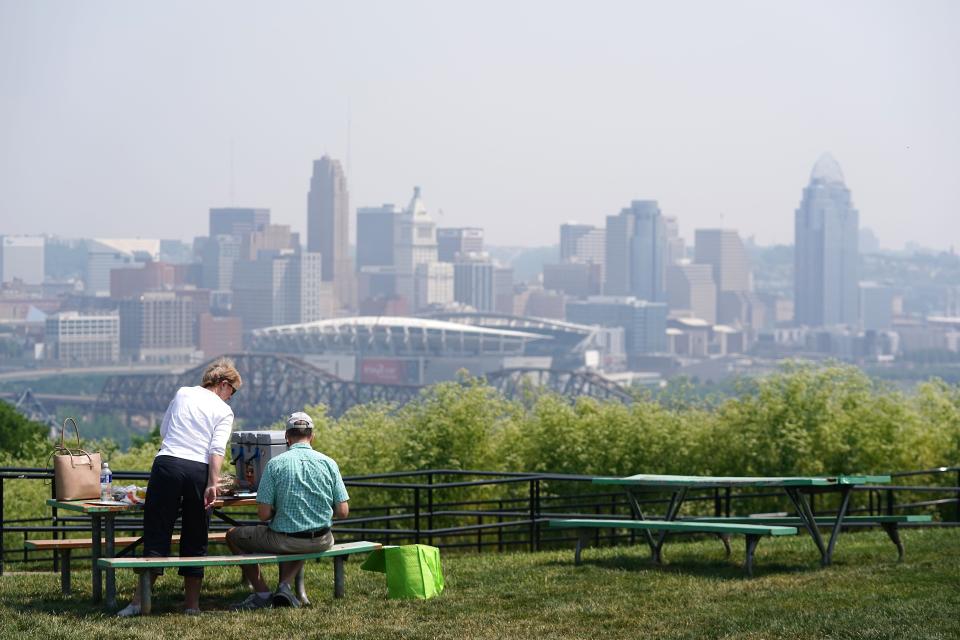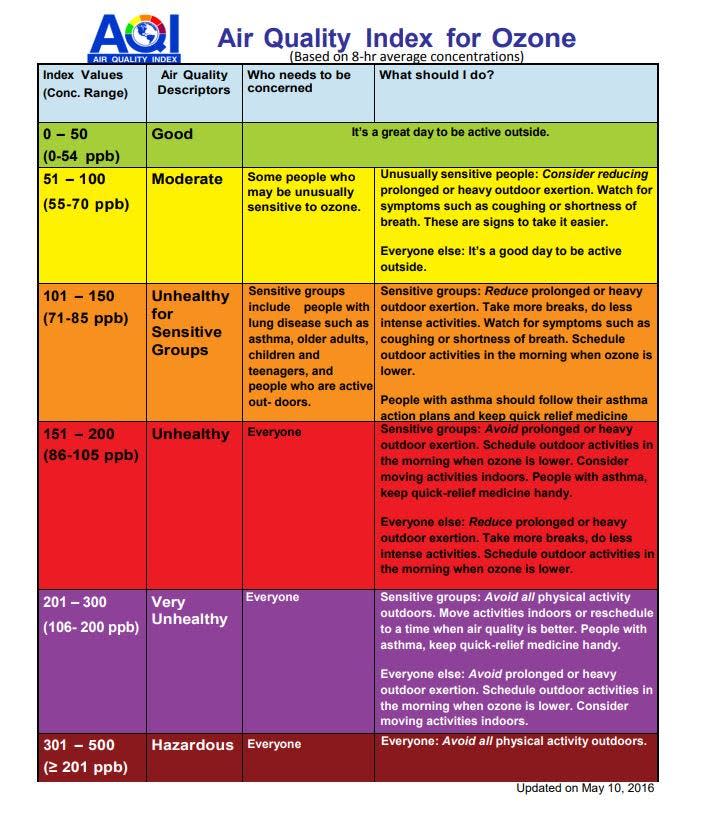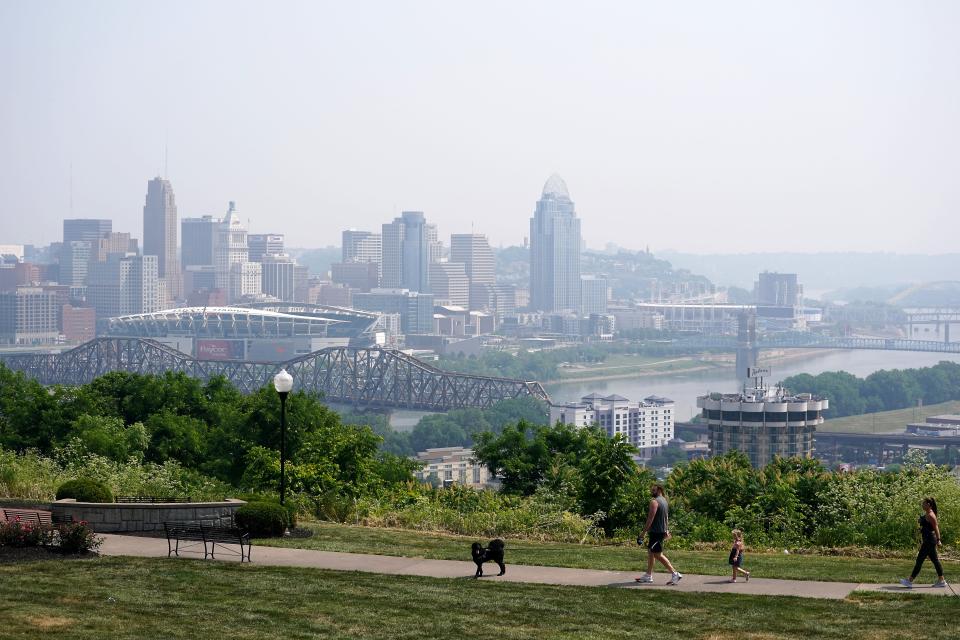Cincinnati and Southwest Ohio have air quality issues. Here's what to know
Cincinnati is ranked as the 18th most polluted city for yearly particle pollution by the American Lung Association's 2023 State of the Air report. The topography of the Ohio River Valley makes it easy for pollution to get trapped between the area's hills and valleys, increasing the possibility of air quality alerts in Greater Cincinnati.
Particle pollution, also known as "particulate matter", is a mixture of microscopic solids and liquid droplets suspended in the air. The size of particles is directly linked to their potential for causing health problems. Fine particles pose the greatest problems because they can get deep into your lungs and some may even get into your bloodstream. Particles less than 10 micrometers include both fine and coarse dust particles that can pass through the nose and throat and get into your lungs.
Canada wildfire smoke: Cincinnati's air quality is worse than Beijing, Shanghai
Air quality alert extended. When will we get rain?
Here's what you need to know about air quality alerts:
What is the Air Quality Index?
The Air Quality Index, or AQI, is a tool developed by the U.S. Environmental Protection Agency used to report air quality conditions. It runs on a scale from 0 to 500, with zero being the best possible air quality and 500 signaling extremely hazardous air conditions.
What is an air quality alert?
The Southwest Ohio Air Quality Agency issues alerts for bad air quality when the Air Quality Index is expected to meet or exceed 101.

What is the air quality near me?
You can find your local air quality at the U.S. Air Quality Index's website by searching your zip code, city, or state. The U.S. Air Quality Index provides an interactive map of national air quality updated daily.
What is unhealthy air quality?
An AQI level from 0-50 represents good air quality, although levels of 100 or below are still considered safe. As the AQI rises above 100, air quality becomes increasingly dangerous, especially for high-risk populations such as children, pregnant people, and those with health conditions such as asthma or heart disease. An AQI of 201 or above is when air quality becomes hazardous for most people.
More: 'Difficult to avoid:' Air pollutants present challenges to vulnerable

What are the different levels of air quality?
The U.S. Air Quality Index's 0-500 scale has six zones, from green to maroon. Green represents good air quality from 0-50 and yellow signals moderate conditions from 51-100. Air quality becomes hazardous for sensitive groups in the orange zone, with an AQI from 101-150. The red zone from 151-200 sees an increased possibility of health effects for the general population, especially those in sensitive groups. An AQI from 201-300 is described as the "very unhealthy" purple zone, where air quality becomes dangerous for all people. The highest level, maroon, has an AQI of 301 with emergency conditions.
What causes bad air quality?
Natural phenomena like wildfires or hurricanes can cause bad air quality by releasing large amounts of pollutants called particulate matter into the air. That can be made up of anything from acids to metal or dust.
Air quality is also affected by burning fuels including gas, oil, coal or diesel, which release pollutants such as carbon monoxide and sulfur dioxide into the air you breathe. Pollutants created by burning fuels also produce ground-level ozone, more commonly called smog, which is one of the most dangerous air pollutants.
Why is air quality worse during the summer?
High temperatures increase certain types of air pollution like ground-level ozone and particulate matter that require sunlight to be produced. The Southwest Air Quality Agency warns that air quality can also decrease in the winter months when pollution is produced from increased open fires and idling cars.

How can I protect myself from bad air quality?
Staying indoors is the best way to protect yourself from bad air quality outside. Keeping windows and doors shut will also decrease your exposure.
What can I do to improve air quality?
Carpooling or using public transportation will decrease your contribution to air pollution when walking or biking to your destination isn't possible. Similarly, avoiding using the lawn mower or other gasoline-powered yard equipment during an air quality alert will prevent you from increasing air pollution. Refueling vehicles in the evening and tightening your gas cap decreases the possibility of pollution that occurs when gas is exposed to sunlight.
This article originally appeared on Cincinnati Enquirer: Air quality issues plague Cincinnati, Southwest Ohio. What to know

